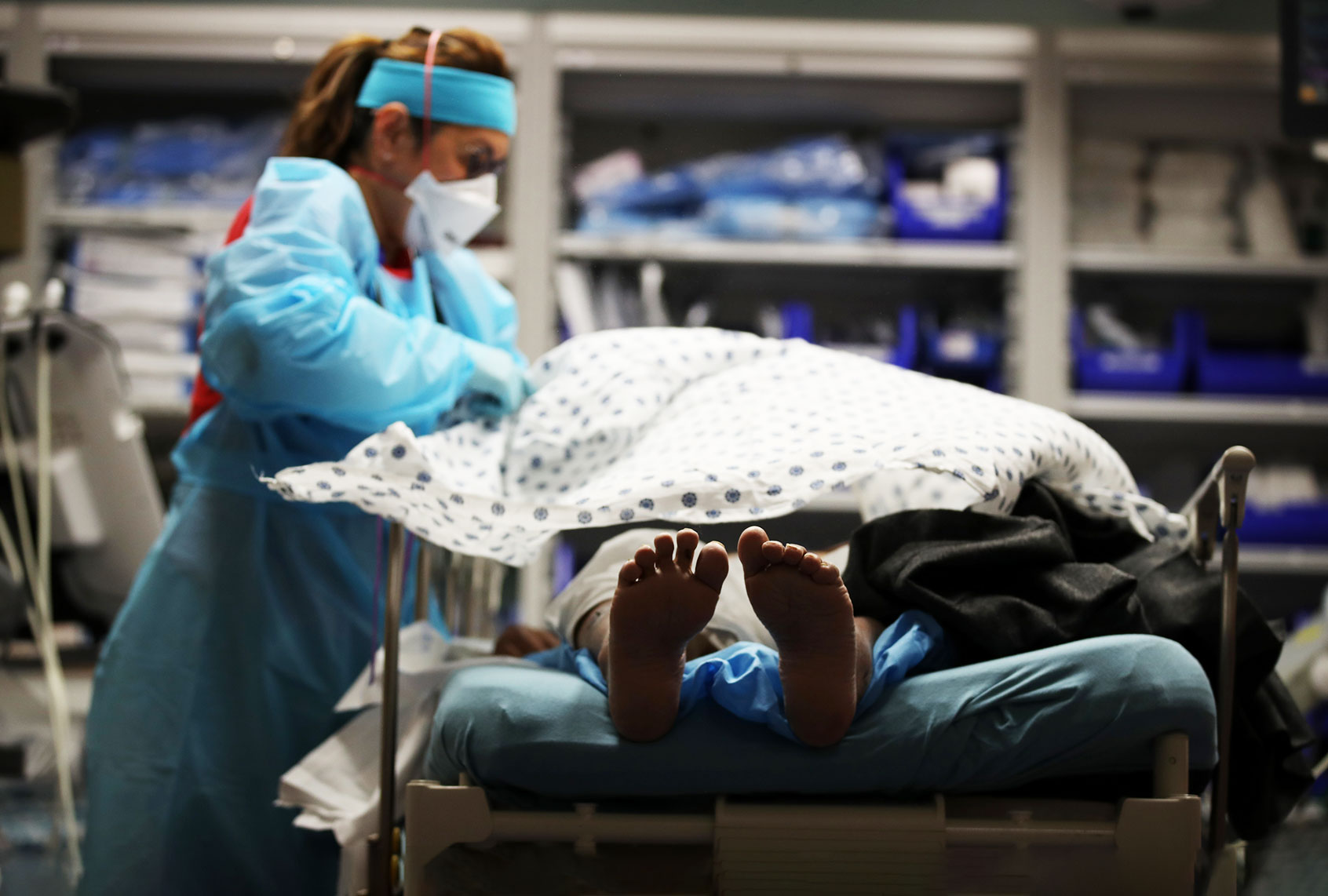
A first-of-its-kind examination of the coronavirus pandemic's impact on low-income communities published Monday shows that Covid-19 has been twice as deadly in poor counties as in wealthy ones, a finding seen as a damning indictment of the U.S. government's pandemic response.
"The neglect of poor and low-wealth people in this country during a pandemic is immoral, shocking, and unjust, especially in light of the trillions of dollars that profit-driven entities received," said Rev. Dr. William Barber II, co-chair of the national Poor People's Campaign, which conducted the new analysis alongside a team of economists and other experts.
Released on the 54th anniversary of Dr. Martin Luther King Jr.'s murder in Memphis, Tennessee—where he was fighting for the rights and dignity of low-wage sanitation workers—the new report aims to bring to the forefront the relationship between poverty, income, and occupation and Covid-19 mortality.
The extent to which class is a predictor of coronavirus vulnerability is understudied, according to Barber, who noted that "Covid-19 data collection does not include data on poverty, income, or occupation, alongside race and pandemic outcomes."
"The Poor People's Pandemic Digital Report and Intersectional Analysis addresses this knowledge gap," said Barber, "and exposes the unnecessary deaths by mapping community characteristics and connecting them with Covid-19 outcomes."
Assessing figures from more than 3,000 U.S. counties, the researchers estimated that the poorest counties have suffered twice as many coronavirus-related deaths as the wealthiest. In the most fatal waves of the coronavirus pandemic—the spike in the winter of 2020-2021 and the Omicron surge—the poorest counties suffered 4.5 times more deaths than the wealthiest.
"This cannot be explained by vaccination status," Shailly Gupta Barnes, policy director for the Poor People's Campaign, said in a statement. "Over half of the population in [the poorest] counties have received their second vaccine shot, but uninsured rates are twice as high."
The analysis features an interactive map that ranks counties based on the intersection of poverty rates—specifically, the percentage of people living below 200% of the official poverty line—and coronavirus death rates.
The county highest on the list is Galax, Virginia, where nearly 50% of the population lives below 200% of the poverty line. The county has a coronavirus death rate of 1,134 per 100,000 people, far higher than the national rate of 299 per 100,000.
Next on the list is Hancock, Georgia, which has a Covid-19 death rate of 1,029 per 100,000 people. More than 52% of the county's population lives below 200% of the poverty line.
Overall, the counties with the highest coronavirus death rates had one-and-a-half times higher poverty rates than counties with lower death rates, according to the new study.
"Poverty in the U.S. is its own epidemic: in 2019 even the richest counties had at least 8% of people and up to 94% of the population living in poverty," the report states.
"We must talk about this!" Barber said Monday. "We cannot say that this is because of individual choices or behaviors. Something deeper is at work—systems that prey on the poor, poor white people, and poor people of color."
"Remember, this unnecessary death happened while we gave corporations $2 trillion to keep them alive and the richest Americans saw their wealth soar," he added. "It's a gross example of what Naomi Klein has called the 'shock doctrine,' when the wealthy exploit tragedy to increase their own profits while poor people suffer.
NEW: This morning we're releasing a report with @UNSDSN that maps the impact of the COVID-19 pandemic along the intersections of poverty, race, and COVID-19!
— Poor People's Campaign (@UniteThePoor) April 4, 2022
Someone is hurting our people and we won't be silent anymore.
Read the report here: https://t.co/oI76SSp6JO pic.twitter.com/9miHXzRYuY
Dr. Jeffrey Sachs, president of the U.N. Sustainable Development Solutions Network and one of the experts behind the study, said the findings make clear that the pandemic is "not only a national tragedy, but also a failure of social justice."
"The burden of disease—in terms of deaths, illness, and economic costs—was borne disproportionately by the poor, women, and people of color," said Sachs. "The poor were America's essential workers, on the front lines, saving lives and also incurring disease and death."
The analysis was released as the U.S. moves closer to the grim milestone of 1 million coronavirus deaths, an estimated toll that's widely seen as an undercount.
Rev. Dr. Liz Theoharis, national co-chair of the Poor People's Campaign, said in a statement Monday that "the Covid-19 disparities among counties across the U.S. are striking."
"This report shows clearly that Covid-19 became a 'poor people's pandemic,'" said Theoharis. "We can no longer ignore the reality of poverty and dismiss its root causes as the problems of individual people or communities. There has been a systemic failure to address poverty in this country and poor communities have borne the consequences not only in this pandemic, but for years and generations before."
"However, this does not need to continue," she added. "Our nation has the resources to fully address poverty and low wealth from the bottom up."
The report argues that while coronavirus vaccines "will prevent the worst impacts of Covid-19, they will not inoculate against poverty."
"However, living wages, shared economic prosperity, and inclusive welfare programs can address root causes that made the U.S. vulnerable to such massive losses of human life," the study continues. "Likewise, ensuring universal and affordable healthcare, housing, water, access to utilities, quality public education, and guaranteeing a robust democracy will establish a more equitable foundation upon which we can build back better from the pandemic."







